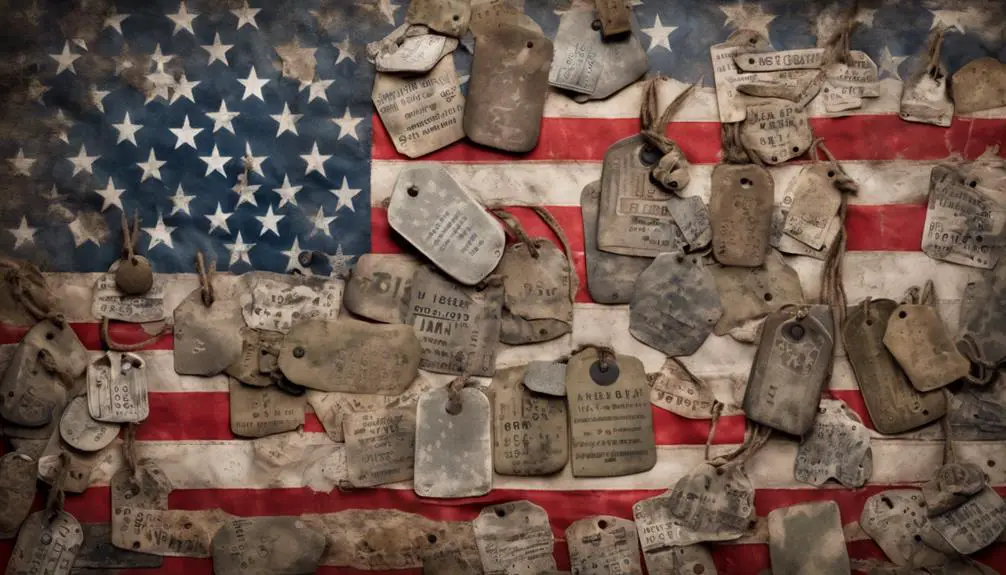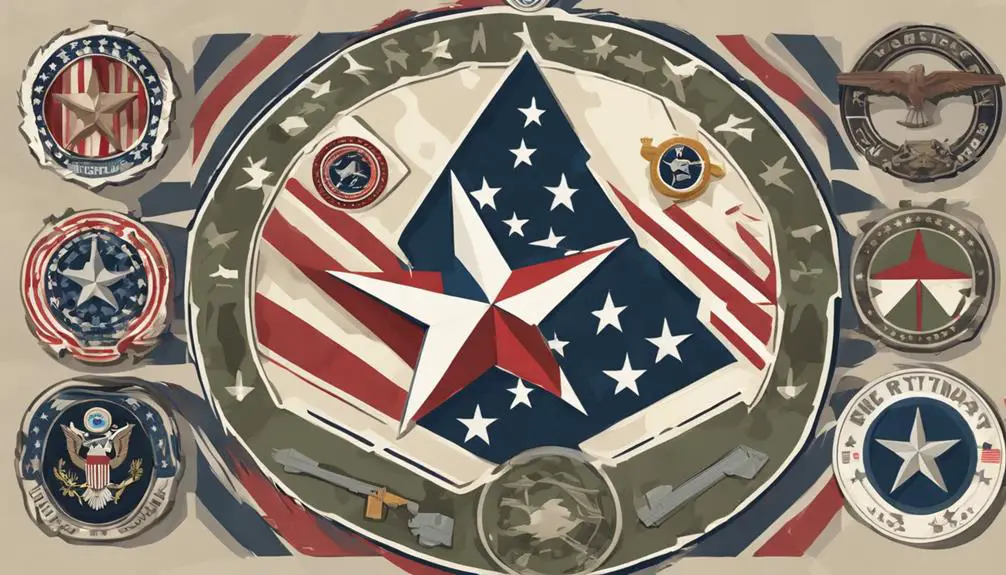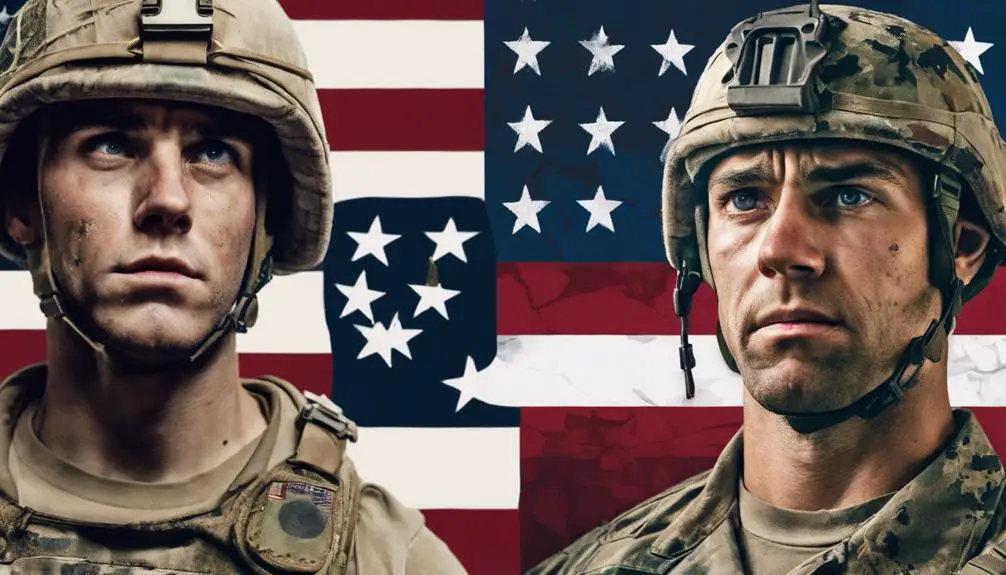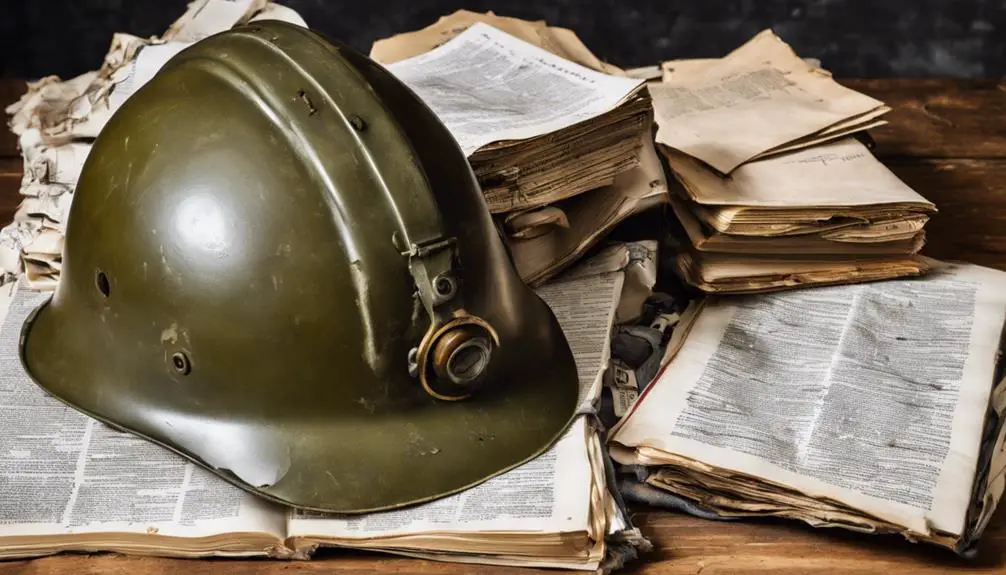You're about to discover the complex world of American military slang, shaped by centuries of conflict, regional dialects, and technical jargon. With over 150,000 military terms and abbreviations in use, understanding this language is vital for efficient communication and mission success. Military slang covers battlefield lingo, informal titles for ranks and roles, specialized equipment names, and colloquialisms for emotional expression. You'll find phrases like 'H Hour' and 'SITREP', technical terms like 'RFL' and 'C2', and equipment names like 'Bird' for helicopter. As you explore this world, you'll uncover the nuances of military communication and how it aids in focus and survival.
Origins of Military Slang

As you explore the world of military slang, it becomes clear that the origins of this unique language can be traced back to the early days of the American military, when soldiers, sailors, and airmen needed a way to quickly communicate complex ideas and emotions in high-stress environments. This linguistic evolution was driven by the need for efficient communication, often in life-or-death situations.
In this historical context, slang emerged as an essential tool for conveying information swiftly and accurately. The early American military's linguistic evolution was shaped by the country's history of conflict, from the Revolutionary War to World War I. During these periods, soldiers from diverse backgrounds came together, bringing with them regional dialects and colloquialisms.
As they interacted, they developed a shared language that was concise, practical, and often humorous. This blend of regional dialects, colloquialisms, and technical jargon formed the foundation of American military slang. By understanding the historical context in which military slang emerged, you'll gain insight into the complexities of this unique language.
Essential Battlefield Lingo
When you're in the heat of battle, understanding essential battlefield lingo is crucial to staying alive and completing missions effectively. Familiarizing yourself with combat phrases and tactical terms can mean the difference between success and failure. You'll need to know phrases like 'H Hour' (the time a mission or operation begins) and 'SITREP' (situation report) to stay on the same page as your team. Understanding tactical terms like 'RFL' (request for logistics) and 'C2' (command and control) will also help you communicate efficiently.
In the chaos of battle, clear communication is key. Using the right lingo can help you quickly convey critical information, like calling in an 'MEDEVAC' (medical evacuation) or requesting 'CAS' (close air support). You'll also need to understand radio protocols, such as 'ROE' (rules of engagement) and 'SOP' (standard operating procedure).
Mastering essential battlefield lingo will help you stay focused on the mission, even in high-stress situations. By speaking the language of war, you'll be better equipped to adapt, overcome, and succeed on the battlefield.
Slang for Ranks and Roles

When it comes to military communication, you'll often hear military personnel referring to their comrades and superiors by nicknames or abbreviations that reflect their ranks or roles, such as 'Grunt' for an infantryman or 'Six' for a commander. These informal titles not only simplify communication but also create a sense of camaraderie within the ranks. Officer nicknames, for instance, can be used to address senior personnel in an informal setting.
'Sir' or 'Ma'am' are common honorifics used to show respect, while 'Boss' or 'Skipper' are more casual alternatives. Regarding Rank Hierarchies, enlisted personnel may use terms like 'NCO' for non-commissioned officers or 'O' for officers. Understanding these nicknames and abbreviations can help you better navigate the complex world of military communication.
Military Jargon for Equipment
Military personnel rely on a unique lexicon to identify and describe various equipment, from 'Bird' for helicopter to 'RTO' for radio telephone operator, streamlining communication in high-stress situations. You'll often hear them using specialized gear names and tech lingo to quickly convey critical information. This jargon allows them to efficiently communicate and respond to changing circumstances.
Here are some examples of military jargon for equipment:
- Bird: Helicopter
- RTO: Radio Telephone Operator
- Stryker: A type of armored vehicle
- MRE: Meal, Ready-to-Eat (a pre-cooked, pre-packaged meal)
Colloquialisms for Emotions

Emotions run high in high-pressure situations, and military personnel rely on colloquialisms to express and process their feelings in the heat of the moment. You've probably heard phrases like 'shell-shocked' or 'battle-weary' to describe the emotional toll of combat. These colloquialisms serve as a coping mechanism, allowing soldiers to acknowledge and process their emotions in the midst of chaos.
For instance, 'battle fatigue' is a common term used to describe the physical and emotional exhaustion that sets in after prolonged exposure to combat. It's a way of acknowledging the emotional weight of war without getting bogged down in sentiment.
Another colloquialism, 'emotional shields,' refers to the mental barriers soldiers erect to protect themselves from the emotional impact of traumatic events. This phrase acknowledges the psychological toll of combat while also implying a sense of resilience and coping.
Frequently Asked Questions
Is Military Slang Used Only in the US Military?
You might assume that military slang is unique to the US military, but that's not entirely true. While it's true that military slang has cultural significance in the US, its usage extends beyond American borders.
Globally, military slang has evolved to reflect regional dialects and cultural nuances. In fact, many countries have their own military slang, adapted to their local languages and cultural contexts.
Are Military Slang Words Used in Formal Military Documents?
You're traversing a sea of official documents, searching for a glimpse of military slang. But, just as a submarine stays hidden beneath the surface, slang terms rarely rise to the surface in formal military documents.
Official records demand formal language, leaving no room for colloquialisms. You won't find 'FNG' or 'HOOAH' in official reports or memoranda.
Instead, formal language reigns supreme, ensuring clarity and precision in military communications.
Can Civilians Use Military Slang in Everyday Conversation?
When incorporating slang from any subculture into everyday conversation, you run the risk of cultural appropriation or misappropriation. It's crucial to take into account social acceptance before adopting military slang.
Ask yourself: are you using these terms to mock or belittle, or to genuinely connect with the culture? Be mindful of your intentions and audience.
If you're unsure, it's advisable to refrain from using military slang, lest you appear insensitive or inauthentic.
Are Military Slang Words Universal Across All Branches?
When you explore the world of military slang, you'll find that branch differences play a significant role in shaping unique dialects. While some slang words are universally understood, others are specific to a particular branch or community.
As slang evolves over time, it's influenced by cultural and operational nuances within each branch. You'll notice that Navy slang, for instance, often revolves around nautical themes, whereas Army slang may focus on combat and deployment experiences.
Is Military Slang Language Officially Recognized by the Government?
'When in Rome, do as the Romans do' – but when it comes to military slang, the government takes a more nuanced approach.
You might think the government would officially recognize military slang language, but surprisingly, it doesn't.
There's no government regulation or linguistic standardization of military slang, allowing it to evolve organically within each branch.
This lack of formal recognition allows slang to remain flexible and adaptable, serving as a unique aspect of military culture.
Conclusion
Now that you've mastered the art of military slang, go ahead and impress your buddies with your newfound lingo. But let's be real, you're probably still going to get lost in the fog of war.
Just remember, when in doubt, shout 'HOOAH!' loud enough and hope nobody notices you have no idea what's going on.
And if all else fails, blame it on the FNG (freaking new guy).
Happy deploying!







